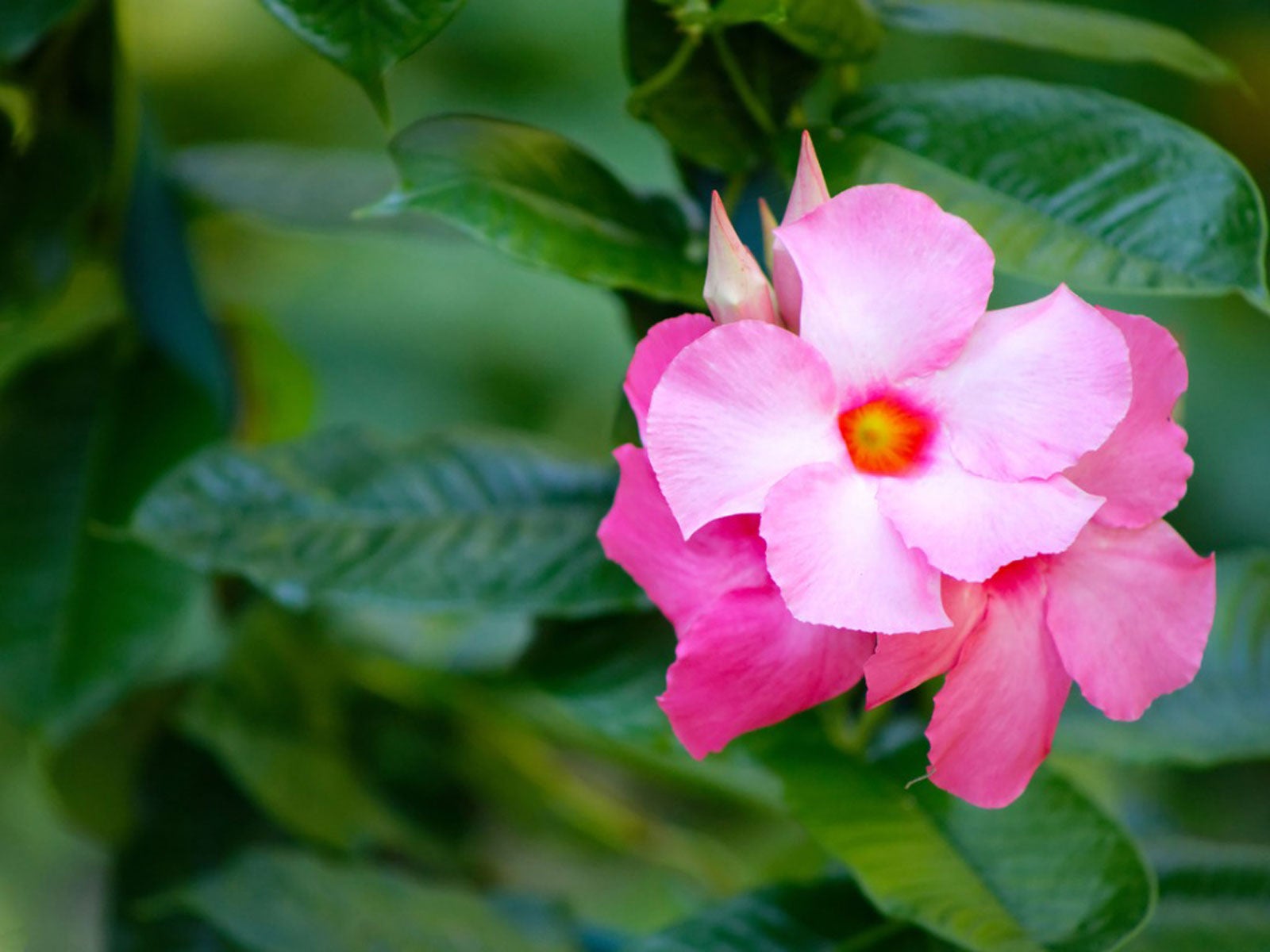Unhealthy Mandevilla Plants: How To Treat Mandevilla Disease Problems


It's hard not to admire the way a mandevilla immediately turns a plain landscape or container into an exotic riot of color. These climbing vines are usually pretty easy to take care of, making them a favorite of gardeners everywhere. Unhealthy mandevilla plants can leave your landscape looking sad and ragged, so keep an eye out for these common diseases on mandevilla.
What Diseases Do Mandevilla Plants Get?
Mandevilla disease problems are usually caused by humid, wet conditions and overhead watering. These cultural problems encourage many types of mandevilla diseases originating from fungal spores or bacterial colonies, but if they're caught early they can often be treated. The most common diseases on mandevilla and their treatments are outlined below.
Botrytis Blight
Botrytis blight, also known as gray mold, is most troubling when the weather has been cool, but moist. It causes foliage to wilt, with brown areas of tissue developing within healthy green tissues. A gray-colored mold may encase buds and leaves, and rotting can occur along stems and into roots. Neem oil or copper salts can be applied to vines just starting to show signs of botrytis blight. Thinning the vine and creating better air circulation can help dry out the fungal spores. Watering at the base of the plant will prevent splashing spores onto uninfected leaves.
Crown Galls
Crown galls are swollen tissue growths around the base of the vine caused by the bacterial pathogen Agrobacterium tumefaciens. As the galls expand, they constrict the flow of fluids and nutrients from the roots of your mandevilla, causing the plant to slowly decline. If your plant has many large knob-like growths at its base and stretching into its roots, you may be dealing with crown gall. There is no cure; destroy these plants immediately to prevent the disease from spreading.
Fusarium Rot
Fusarium rot is another fungal disease that can cause serious problems for mandevilla. It's very difficult to control once it has taken hold, so watch for early symptoms like sudden yellowing or browning of leaves limited to sections of the vine. If left alone, the plant will rapidly collapse as fusarium fungal bodies clog transport tissues. Drench your plant with a broad-spectrum fungicide like propiconazole, myclobutanil or triadimefon as soon as symptoms begin.
Leaf Spots
Leaf spots result from a variety of fungi and bacteria that feed on leaf tissues. Leaf spots may be brown or black, with or without yellow halos around damaged areas. Some spots may grow rapidly until they engulf the infected leaf, causing it to die and drop. Positive identification is always best before treating leaf spots, but when time is short, try a copper-based spray, since they are often effective against both bacteria and fungi. Neem oil is among the best treatments for fungal leaf spots.
Southern Wilt
Southern wilt (also known as southern blight.) is a less common, but devastating bacterial disease that may originate in greenhouses. Symptoms include yellowing and browning of lower leaves followed by leaf drop as the disease moves up the plant's stem. Infected plants will die; there is no cure. If you suspect southern wilt, destroy the plant to protect your landscape from potential infection. Note: Any recommendations pertaining to the use of chemicals are for informational purposes only. Chemical control should only be used as a last resort, as organic approaches are safer and more environmentally friendly.
Sign up for the Gardening Know How newsletter today and receive a free copy of our e-book "How to Grow Delicious Tomatoes".

Kristi Waterworth was a regular contributor to Gardening Know How for many years, answering countless queries on plant pests and diseases.